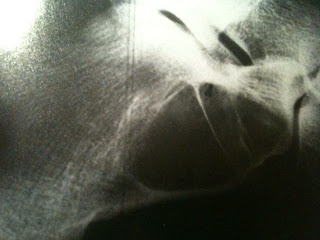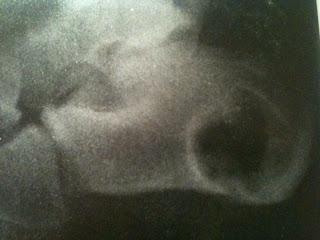Having one leg that is shorter than the other (called “limb length discrepancy” or “short leg syndrome”) can lead to a number of problems. These include pain in the back, hip, knee and foot. In fact, we have seen many patients who have spent years and thousands of dollars trying to figure out why they have back, knee and hip pain – only to be told that nothing is wrong with their joints. With simple measurements of their legs these people could have avoid years of pain and unnecessary medical expenses.
Dr. Williams and Dr. Silvers are experts at diagnosing short leg syndrome and treating the problems associated with it. For an evaluation, call to make an appointment at Advanced Foot & Ankle Center in McKinney & Prosper.
Causes of Short Leg Syndrome
The most common causes include:
* Congenital problems which include issues with the position of the fetus in the womb
* Injuries that occur at the time of birth. For example a dislocated hip.
* Trauma that affects the growth plate during childhood.
* Fractures or dislocations affecting the leg bones and joints
* Surgery on the hip or knee – for example a hip or knee replacement
* Poor posture so that the pelvis is tiled leaving one side higher than the other.
Symptoms of Short Leg Syndrome
Symptoms can occur almost anywhere in the body – from the feet to the jaw. If one leg is short, some sort of compensation usually takes place – this compensation can lead to other problems. For example, if you have a short leg you may lean toward the short side. This can put excessive pressure on one hip and knee. Other symptoms may include the following:
* Knee pain in either the short or the long leg
* Nerve pain in the lower back and legs (sciatica),
* Poor coordination or balance
* Pain in the feet and ankles
* Jaw pain (TMJ)
* Tiredness and fatigue
Compensation for a short leg
When one leg is short, your body works hard trying to correct the problem and equalize the two legs. This is called compensation. Compensation can be very complicated and vary from person to person, but two common methods of compensation include:
1. Leaning towards the short leg, in order to extend it and make the leg longer.
2. Flattening the foot on the long side in order to make the leg act shorter. This is called pronation.
In fact, these types of compensation may help us walk more normally. Unfortunately they also place abnormal force on our feet, ankles, knees, hips and lower back – even the neck. This can, of course, lead to pain.
Diagnosis of Limb Length Discrepancy
We diagnose a short leg in three different ways
• We have you lie down and/or sit in our treatment chair and directly compare your right and left leg length
• We can examine your gait. There are some distinctive traits seen in the gait of persons who have a short leg
Treatment of Short Leg Syndrome
To relieve the pain of a short leg — whether the pain is in the feet, ankles, knees, hips, or lower back — our goal is to equalize the length of both legs. We can accomplish this in several ways.
Building up the sole and heel of your shoes. This technique is especially helpful for those people with large differences (greater than 1″) in their limb length. The problem with this treatment is that it can be a hassle to add a lift to all of your shoes.
Add Lift Inside Shoe: This is the quickest and simplest method of adjusting for a short leg. The downside is that these lifts can wear out quickly and raise only the heel rather than the entire foot. In addition, they do not compensate for the abnormal pronation that often occurs when a short leg is present. At the very least, we will often start with in-shoe lifts and then move onto more definitive treatments later.
Custom Orthotics: Custom orthotics for short leg offer the advantage of treating both the short leg AND the abnormal pronation that usually occurs when a limb length discrepancy is present. These comfortable medical devices, made from molds of your feet, will not wear down for years, thus saving you money and pain.
Your orthotics will be designed to also relieve the pain of calluses, neuromas, bunions, ball of foot pain, and other biomechanical defects which are caused by having a short leg. If your leg is short by 1/4 inch or less, you will be able to wear our orthotic in most dress shoes. If the shortage is greater than 1/4 inch, then you may need to wear walking shoes, gym shoes, or extra deep dress shoes.
If you feel you may have a short leg, please come see Dr. Williams or Dr. Silvers at Advanced Foot & Ankle Center in McKinney and Prosper, TX.













